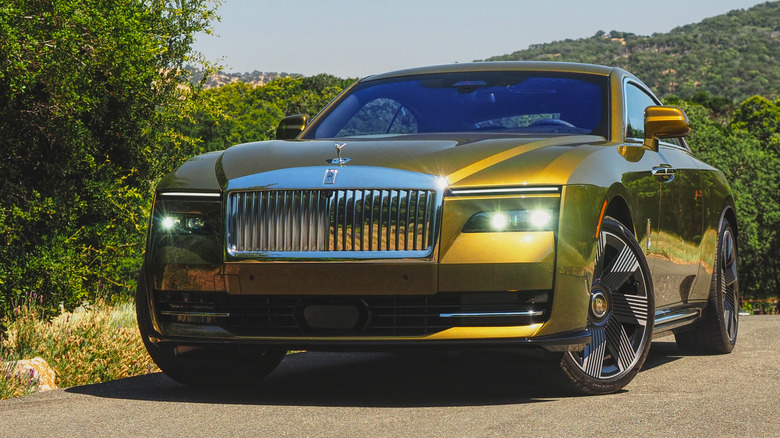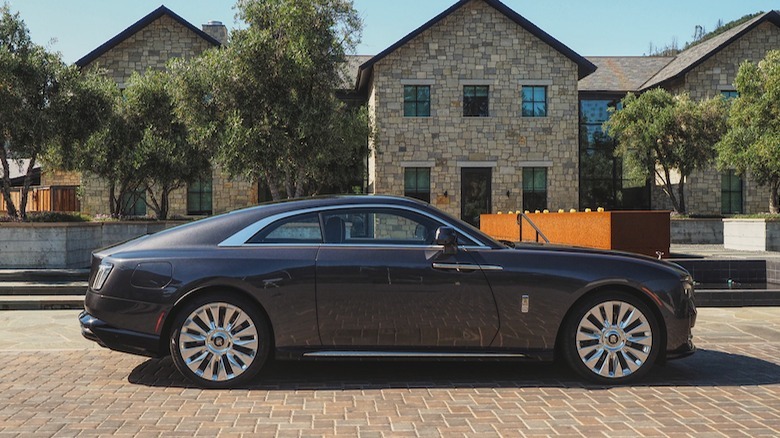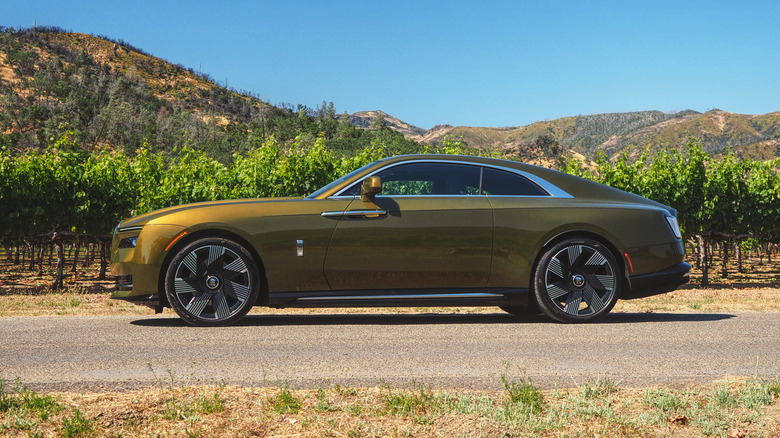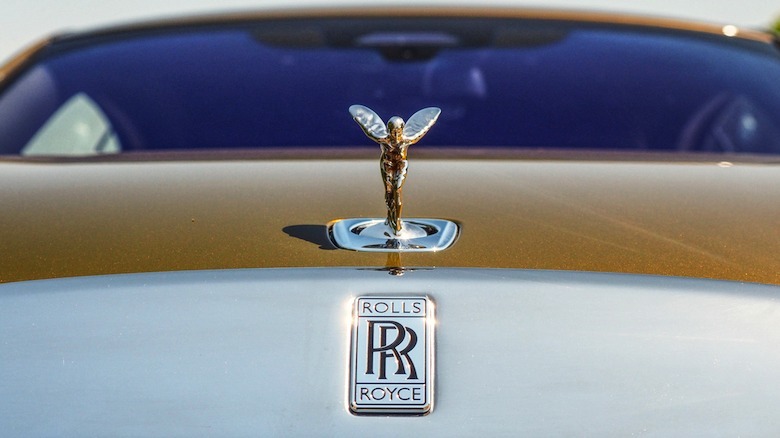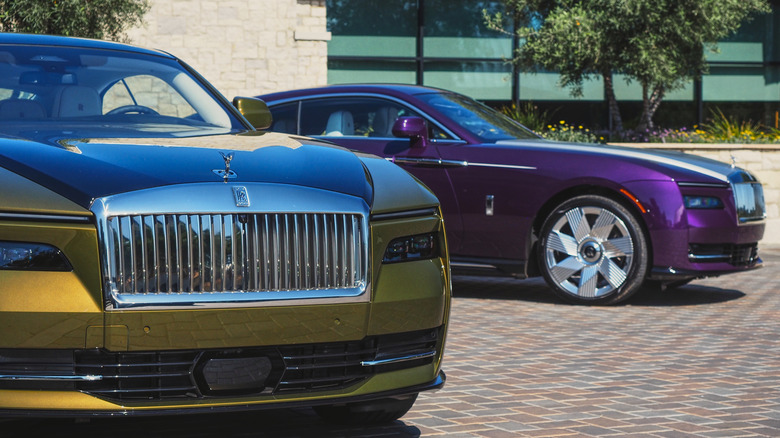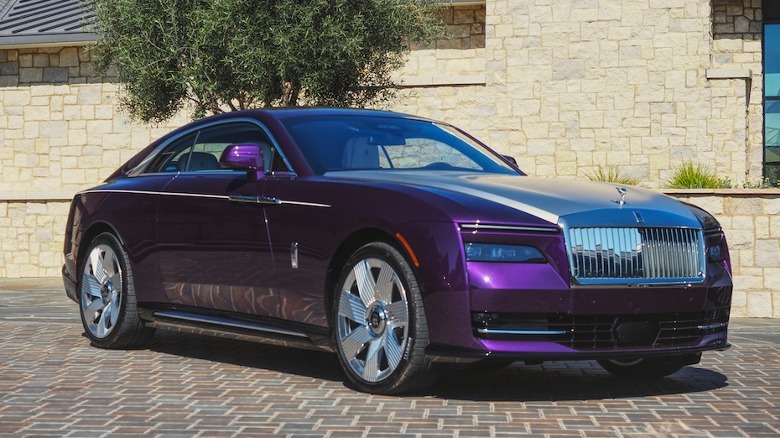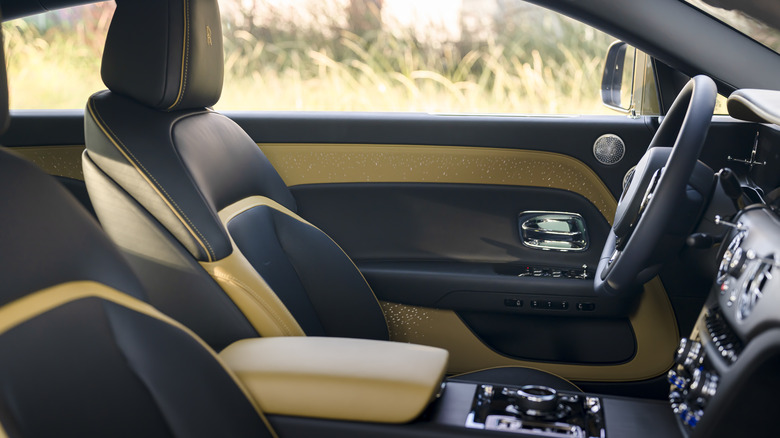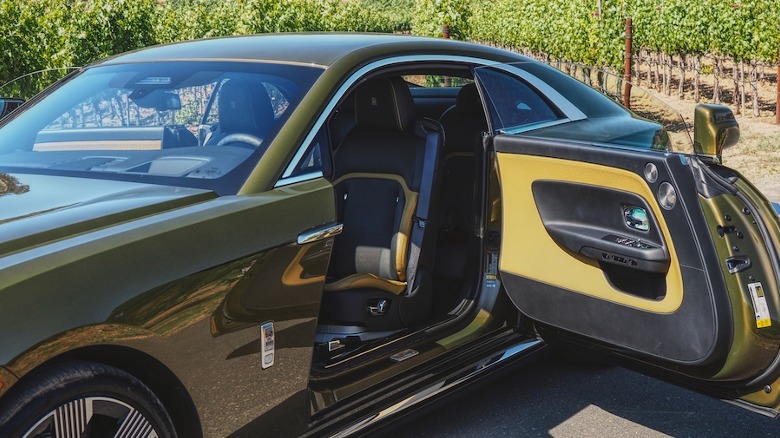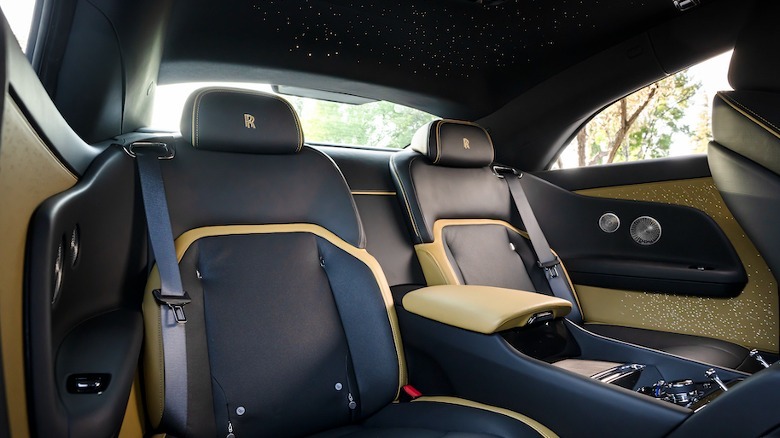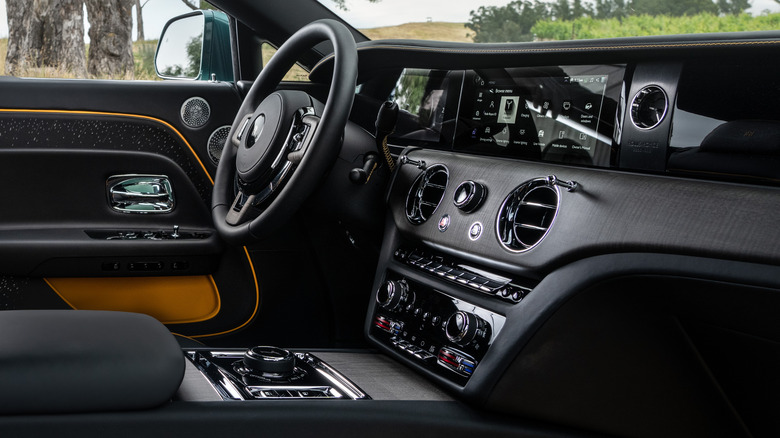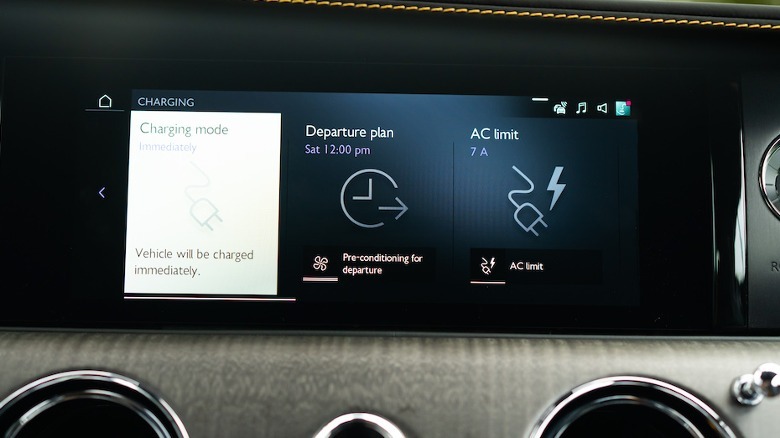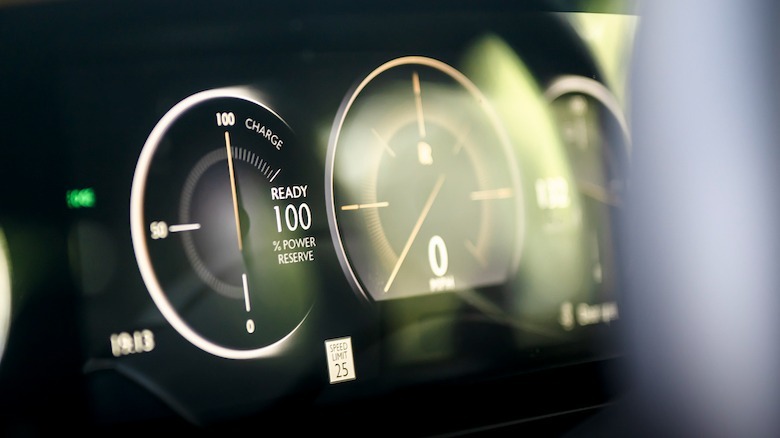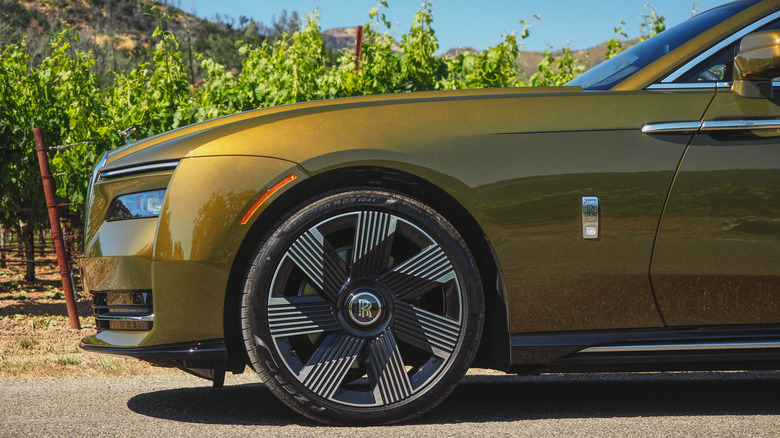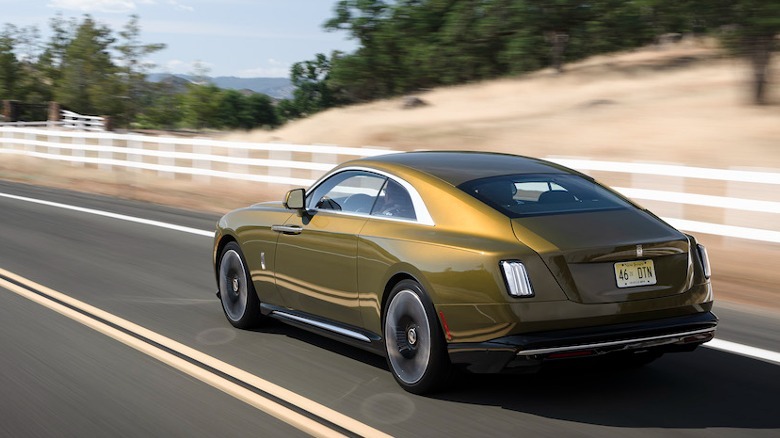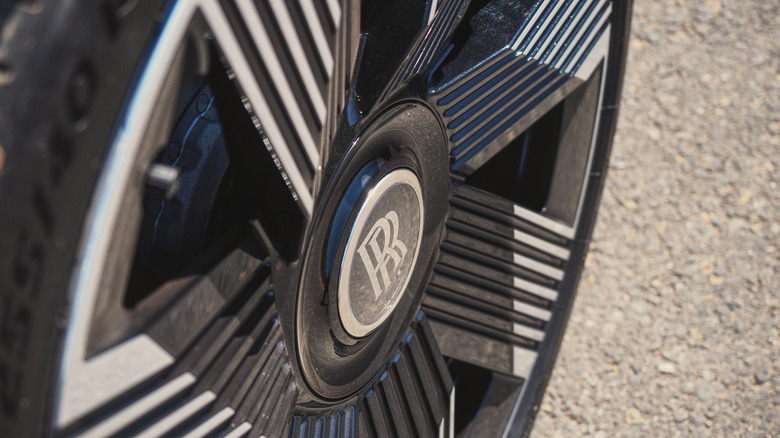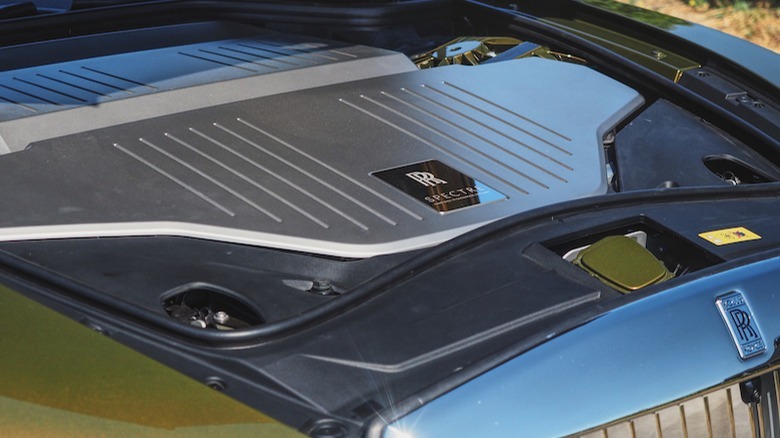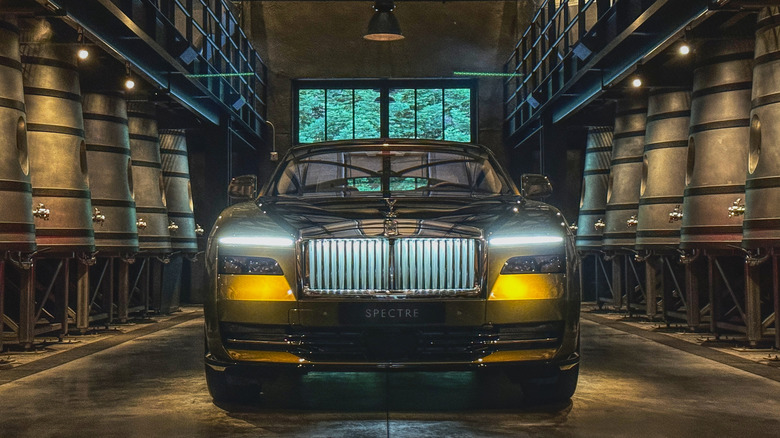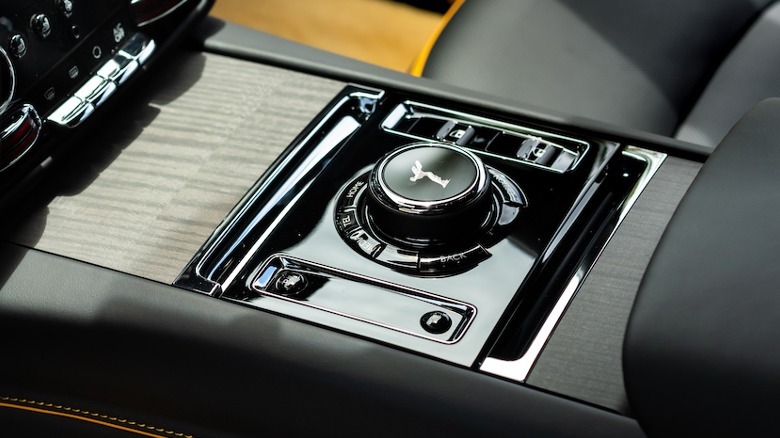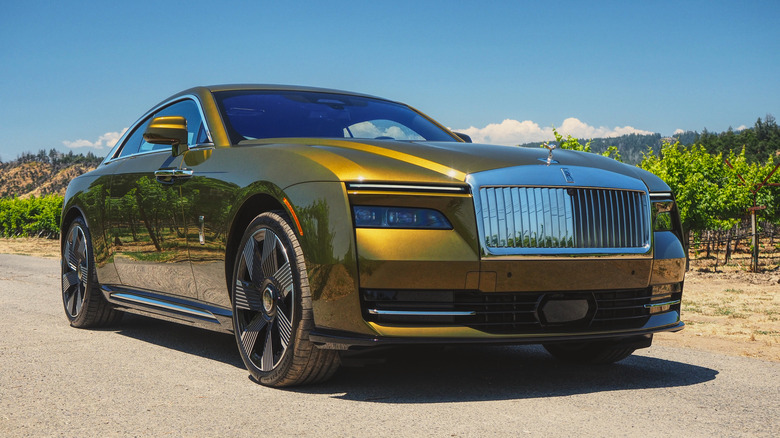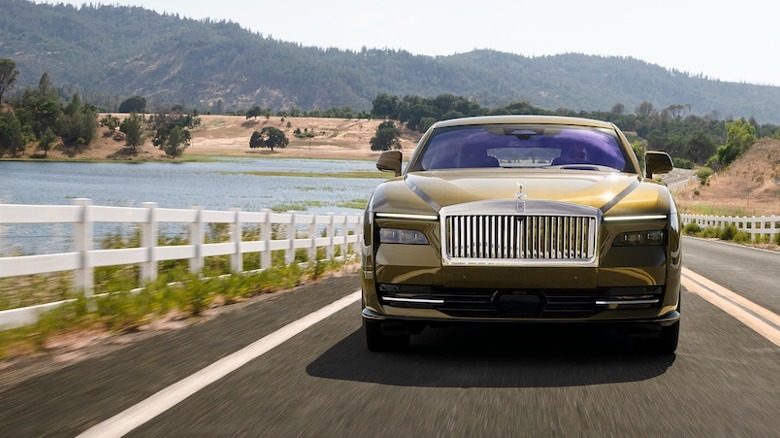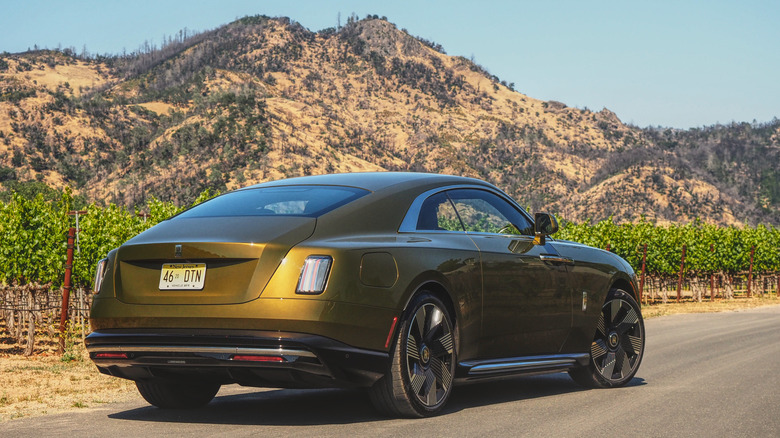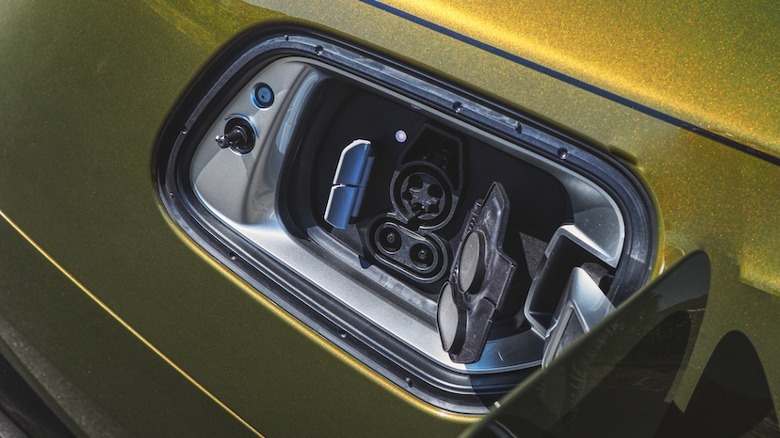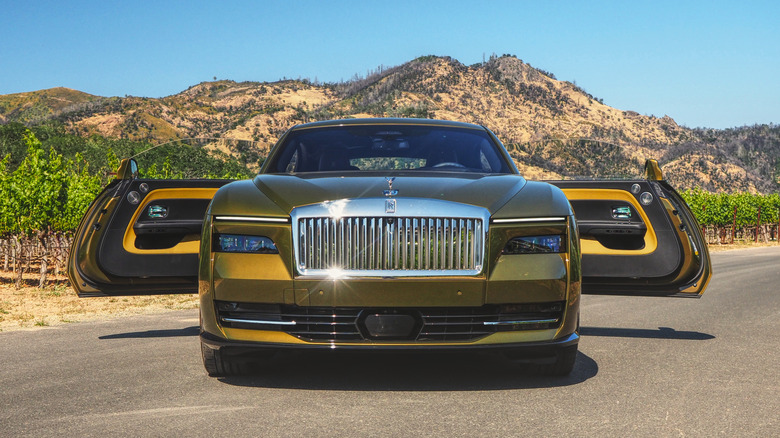Rolls-Royce Spectre First Drive: Half-Million Dollar EV Comes With Surprises
For a company so proud of its V12 gas engine, Rolls-Royce went to amusingly extreme lengths to make owners forget it was there. Now, with the arrival of Spectre and the new age of electrification the coupe represents, the storied British brand can do away with its 6.75-litre, twelve-cylinder compromise. Goodbye, embarrassing internal combustion vibrations; farewell, infuriating noises from all those oily, inconvenient moving parts.
Rolls-Royce likes to tell you two things about its move to EVs. The first is that company co-founder Charles Rolls presaged it all the way back in 1900 when he declared electric cars "perfectly noiseless and clean" but warned they wouldn't be practical "for many years to come." The second is that Spectre is "a Rolls-Royce first, an electric car second."
You have plenty of options, shopping for electric luxury. Lucid's Air and BMW's i7 bring a tech-first vision; Tesla's Model S Plaid serves up speed. Others can be lavish, or particularly rewarding to drive; none command the $420,000+ price tag of a Spectre or its singular focus.
Then again, when your target audience already has a garage full of exotic playthings, your new EV doesn't need to do everything. It just needs to be true to itself.
Leaning into excess
There's no mistaking Spectre for anything other than a Rolls-Royce. From the upright "pantheon" grille — now with even more illumination — to the streamlined Spirit of Ecstasy and swooping shoulder line, there's definite presence. An intentional avoidance of unnecessary surface detailing only exaggerates that: the side casting, a single piece more than 21 feet in length, is the largest in the company's history.
Its scale is deceptive: at almost eighteen feet long, it's bigger than the automaker's previous coupe, the Wraith. It's even longer than a Cullinan SUV, and rides on huge 23-inch wheels: a first for a production Rolls-Royce. The dimensions actually bring it closer to the Phantom Coupe discontinued back in 2016.
Rolls-Royce leans into that excess, of course, rather than apologizing for it, and not taking the easiest route for the company's first electric production car was key to that. "It would be very easy for us to electrify an SUV, it would've been very easy for us to electrify a sedan," Dr. Mihiar Ayoubi, Director of Engineering, says of Spectre. "We just wanted the scale of this coupe to be beyond any other coupe in this segment."
We are not the taste police
If the result is successful, it's because of Rolls-Royce's willingness to commit to it. From the self-righting "RR" wheel logos to the near-five-foot-long, rear-hinged coach doors (which feature power assistance, naturally), Spectre is a triumph of detailing. Plus, as the fleet of cars that are some of the earliest off the production line demonstrates, the company's willingness to customize only helps there.
In dark finishes, with subtle pin-striping, Spectre is moody and sinister. Two-tone options allow for a more classic look, or alternatively a more outré one. The Chartreuse green of this car — specially developed for the EV — shimmers like its namesake liqueur; lavish purples and raspberries seem tailor-made for rap videos and Monaco alike.
Absent is a Spectre Black Badge option, though given Rolls-Royce's success with its "after dark" theme that seems only a matter of time. Similarly absent is any sort of judgment for the whims of its clients. "We are not the taste police," Torsten Müller-Ötvös, Rolls-Royce's CEO tells me. Difficult commissions are more an issue of time (and, probably less pressing to the company's usual customers, budget) than reluctance to embrace more outlandish projects.
If it looks like metal, it is metal
The same goes for the interior, where Rolls-Royce's experience with wood, leather, carbon fiber, and other materials is on full display. Spectre is a true four-seater (as you'd hope, given the overall dimensions) with genuine room for adults in the front and the rear. Even access to the back seats is straightforward, courtesy of those vast doors.
As with the exterior, you could play things conservatively or be more playful with colors, textures, and materials. The starlight headliner, with its twinkling fiber optic constellations and periodic shooting stars, now optionally extends down into the perforated leather of the door panels.
It's charming, but Spectre's authenticity of materials is what you're truly paying for, here. The eyeball air vents look like gleaming metal because that's what they are, becoming crisply cold when the A/C is turned up. The organ stops for airflow adjustment are a delight; everything has a firmness and solidity, avoiding change for its own sake.
The technology is there, but hidden
Indeed, anybody who has spent time in a recent Rolls-Royce won't be startled by the dashboard and other controls. Spectre resolutely avoids the technology overload found in most electric cars. There's a touchscreen, but it's a sensible size rather than attempting to replace every button with a virtual alternative. A row of smooth metal toggles underneath can be programmed as shortcuts for everything from radio stations and media playlists to settings such as hiding the Spirit of Ecstasy or adjusting the active safety features.
Each seat gets its own individual climate control zone, but you adjust it with tactile dials rather than choosing an arbitrary number. Fan speed feels similarly analog, while the blinker sound is a blend of the ping-ping-ping of your fingernail on the metal vents, along with a crystal glass.
As with Ghost and other cars, the driver's instrumentation is presented on a digital display, though Spectre introduces bespoke gauges that match the color scheme of the rest of the cabin. The simplified graphics show just the essentials: speed, power reserve, range, and little else.
It's Rolls-Royce's way or the highway
Spectre's simplicity extends to your options as you drive: or, more accurately, the absence of them. Most modern cars offer a bevy of drive modes, suspension adjustment, steering weight, and more. Here, it's pretty much a decision of "Do you like how a Rolls-Royce drives, or do you want to visit a different dealership?"
It's difficult to explain just what Rolls-Royce's preferred "Magic Carpet Ride" dynamic is like. The automaker's own description is dichotomous: all the information of the road, yet disconnected from the environment outside of the car. It's certainly nowhere near firm, but neither does Spectre wallow. About the closest I can get is the sensation of a big yacht cruising through gentle seas, surging through cresting waves with neither dive nor shimmy, but instead always level and settled.
Vast quantities of engineering have gone into delivering that singular feeling, of course. Spectre's aluminum construction is hugely stiff — it's 30% more torsionally rigid than Ghost, for instance — helped by building the sizable, low-slung battery pack directly into the cabin. That firmness means the active roll bars can focus on comfort rather than preventing twist.
There's four-wheel steering, all-wheel drive, adaptive dampers, and the largest air suspension system Rolls-Royce has ever used, all murmuring behind the scenes through Spectre's brand-new electrical architecture. What arguably makes the biggest difference, though, is an intentional decision to eschew what for most electric car-makers is the biggest selling point of their EVs.
Waft this way
Torque has become the killer feature of electrification. Delivered instantaneously, and — preferably, for electric performance vehicles — slamming your body back into the seat as an expression of pure potency. So, for a vehicle so willing to embrace excess, it's a surprise that Spectre doesn't wield its 664 lb-ft of torque and 584 horsepower like a broad British cudgel.
"All other manufacturers are rocketing the car," engineering chief Dr. Ayoubi says. "We put an artificial delay into the electric drive, because it should feel natural. The car should accelerate waftably."
In short, Spectre's torque curve mimics that of the V12 engine in, say, a Black Badge Ghost. The result is still fast, of course — 0-60 mph lands in an estimated 4.4 seconds — but speed arrives in a building wave rather than a kick to the spine. That's because pace is important, Dr. Ayoubi agrees, but so too is stability. Spectre's tapering rump can't be allowed to hunker down when you first bury your right foot to the plush carpet, and nor can the Spirit of Ecstasy dive as the EV pulls to a halt.
Two choices from behind the wheel
There are just two drivetrain options, and even then I think that's one too many. The first is regenerative braking: usually, when you take your foot off the accelerator, Spectre sails like a gas-engined car, gently slowing. Press the "B" button, though, and you get a one-pedal mode with more aggressive braking when you lift your foot.
Spectre's brake regen takes a little getting used to — particularly at low speeds, where you've tapped so little pedal travel that modulating it smoothly requires some practice — but I'm glad it's an option. Less necessary, in my opinion, is the artificial sound that Rolls-Royce developed. According to Dr. Ayoubi, its inclusion was at the request of some existing owners, who were concerned that the audible feedback (hushed, but still present) familiar from the V12 gas engine would be missed in an EV.
The resulting sound is, by electric car standards, fine: it's a subtle electronic warbling, like vocoder-equipped monks chanting somewhere down a long metal corridor. You can — and should — turn it off, though, and enjoy the almost unnerving degree of quiet in the Spectre's cabin. There's no active noise cancellation at work, here, just massive amounts of sound insulation, and engineering to keep road and wind noise from the cabin. I think Rolls-Royce should've put its foot down and told buyers that, once they've experienced Spectre at its most silent, any concerns about needing a soundtrack would be short-lived.
Spritely but not sporting
Happily, once switched off, you need never hear that artificial sound again. If the truest definition of luxury is isolation from the tedious — whether that's noise, decisions, or concessions — then Spectre nails its brief perfectly. The electric motors are all but inaudible; there are none of the pops and clicks that the electrical systems in other EVs can periodically surface.
Rolls-Royce's confidence in its tuning means no worrying that you're in the wrong mode for the road. "We already know what's best in the car," Dr. Ayoubi says, spurning humility in a way only possible when you really do know what your customers like and dislike.
Spectre isn't, you'll probably be unsurprised to hear, the car you'll choose for tight, twisty canyon driving. It excels in sweeping curves and on long straights, gliding imperiously and ignoring ill-kept asphalt. Sharper turns and mountain roads remind you just how wide this EV is, and the potential cost — in time, in money, and in weeping artisans back at Goodwood — of scratching its not-inconsiderable fenders. It's not so much that Spectre can't be fairly nimble, unexpectedly so for something weighing almost 6,400 pounds, just that you'll really want all the lanes to yourself before you try that out.
A rare range surprise
According to the EPA's test cycle, Spectre's 102 kWh (net) battery is expected to last for 260 miles. In reality, that seems a conservative estimate. Even without much restraint with the accelerator, the EV averaged 3.0 miles per kilowatt hour during my time with it. That's genuinely astonishing for an electric car of this weight, and it suggests 300+ miles between plugging in is no great challenge.
The lingering pain point for electric cars is usually charging, and there Rolls-Royce has conveniently side-stepped the obstacle. Speaking to potential Spectre owners, the automaker says, made clear that even with the EV's 195 kW DC fast charging support, most intended to plug in primarily at home. Meanwhile, the typical concerns of new car buyers — that they'll need to rely on public chargers for longer road trips — aren't so pressing, when your electric coupe is invariably one of multiple vehicles waiting in the garage.
Spectre's companion app, Whispers, includes the usual remote access to the vehicle's location, charge status, cabin preconditioning, and locking and unlocking the doors. It's also a social network for Rolls-Royce owners, with direct access to the automaker's concierge.
Fulfilling promises, a century later
Like any Rolls-Royce, Spectre is gloriously excessive. Also, like any Rolls-Royce, trying to define it by the measures of more mainstream cars feels like a pretty pointless exercise. No potential Spectre owner needs to be convinced about the wisdom of their purchase, and nor are they cross-shopping it with other EVs.
For the automaker, Spectre's arrival means a fascinating shake-up of demographics: about two of every five preorders are from people who haven't owned a Rolls-Royce before. For the rest of us, who can't justify a half-a-million-dollar luxury electric coupe, there's maybe the hope that one day the refined EV motors or the intentional commitment to one "correct" driving experience — rather than hedged-bets across a dozen settings — will trickle down to more mass market models.
Or, perhaps that's mistaking the whole point entirely. Other electric cars may drive faster, or further, but — as feats of engineering go — this one comes closest to the Rolls-Royce ideal that the automaker has ever achieved. Perhaps Spectre's purest justification is as a figurehead for electrification being aspirational: a beautiful, beguiling EV somehow both restrained and profligate, that you can't help but be charmed by.
